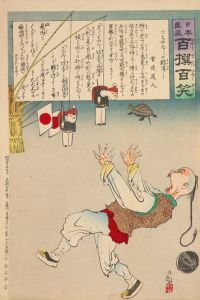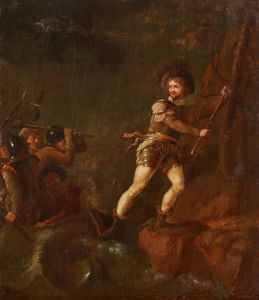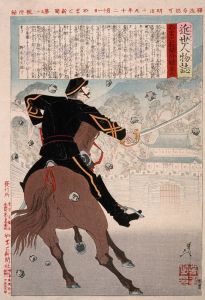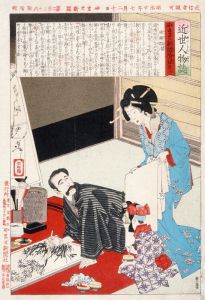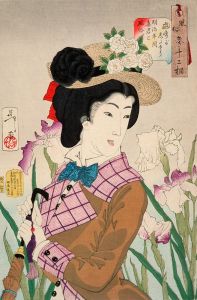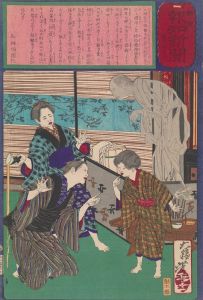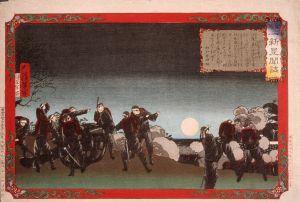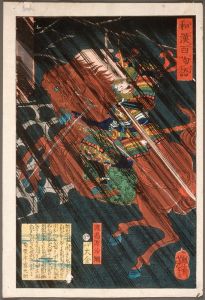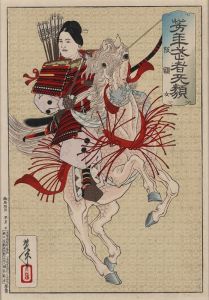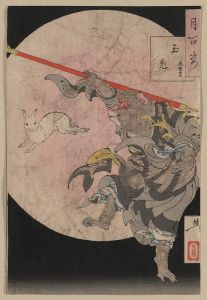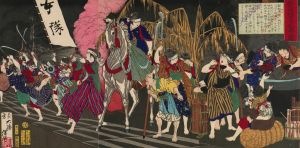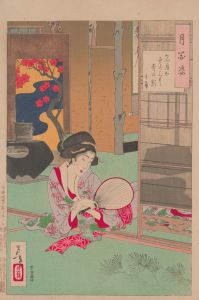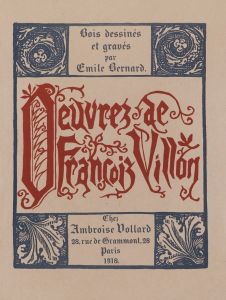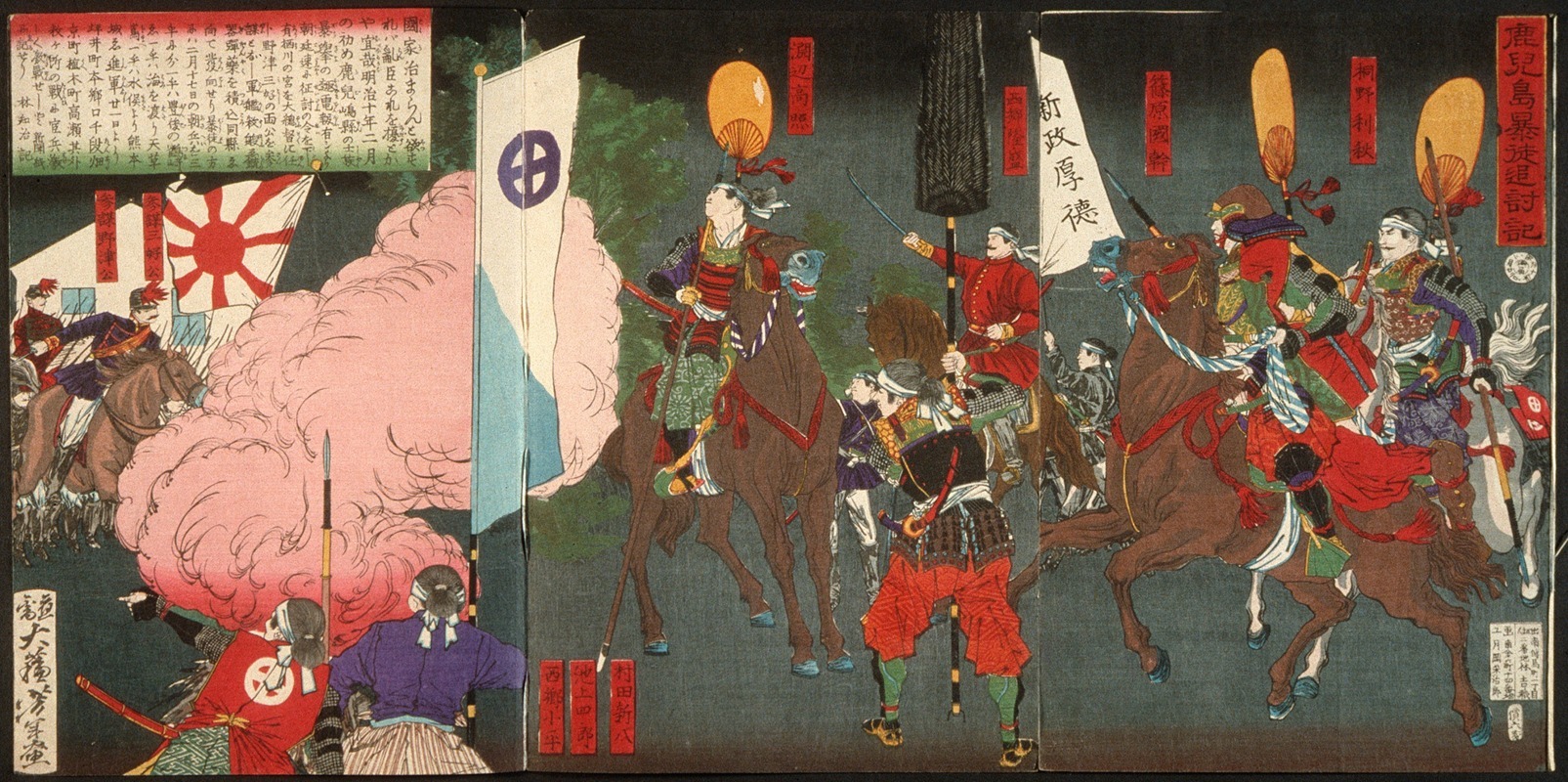
A Chronicle of the Pursuit of Rebels at Kagoshima
A hand-painted replica of Tsukioka Yoshitoshi’s masterpiece A Chronicle of the Pursuit of Rebels at Kagoshima, meticulously crafted by professional artists to capture the true essence of the original. Each piece is created with museum-quality canvas and rare mineral pigments, carefully painted by experienced artists with delicate brushstrokes and rich, layered colors to perfectly recreate the texture of the original artwork. Unlike machine-printed reproductions, this hand-painted version brings the painting to life, infused with the artist’s emotions and skill in every stroke. Whether for personal collection or home decoration, it instantly elevates the artistic atmosphere of any space.
Tsukioka Yoshitoshi (1839–1892) was a prominent Japanese ukiyo-e artist, known for his innovative and dramatic woodblock prints. One of his works, A Chronicle of the Pursuit of Rebels at Kagoshima, depicts a scene from the Satsuma Rebellion (1877), a significant historical conflict in Japan's Meiji period. This rebellion was led by Saigō Takamori, a former samurai and government official, who opposed the rapid modernization and centralization policies of the Meiji government. The conflict marked one of the last major uprisings of the samurai class in Japan.
The artwork captures the pursuit of rebel forces in Kagoshima, the southern region of Kyushu where the rebellion culminated. Yoshitoshi's print is notable for its dynamic composition and vivid portrayal of the tension and violence of the conflict. The piece reflects Yoshitoshi's ability to combine traditional ukiyo-e techniques with a more modern and dramatic sensibility, which was influenced by the changing artistic and cultural landscape of the Meiji era.
Yoshitoshi's works often explored themes of history, folklore, and human emotion, and this print is no exception. It provides a visual narrative of the rebellion, emphasizing the bravery and tragedy of the participants. The Satsuma Rebellion itself was a pivotal event in Japanese history, symbolizing the end of the samurai era and the consolidation of the Meiji government's authority.
As with many of Yoshitoshi's works, A Chronicle of the Pursuit of Rebels at Kagoshima demonstrates his mastery of color, line, and composition. The print likely served both as a historical record and as a piece of popular art, appealing to a wide audience during a time of significant social and political change in Japan.
Further details about the specific production date or the series to which this print belongs are not readily available. However, it is consistent with Yoshitoshi's broader body of work, which often depicted historical and contemporary events with a dramatic and emotional intensity.





